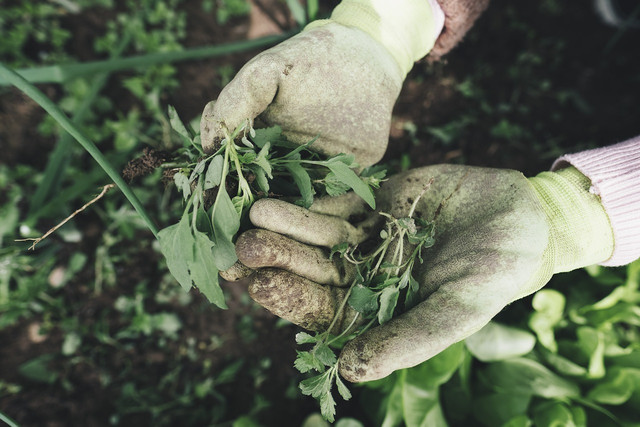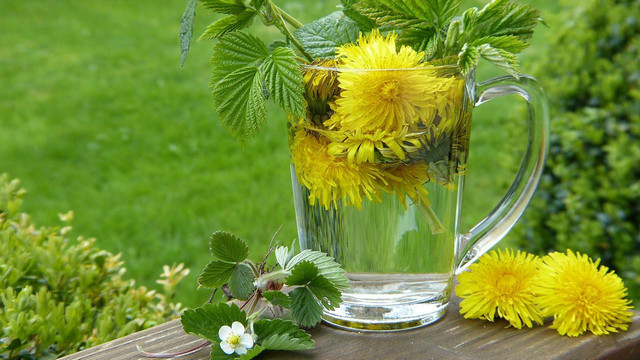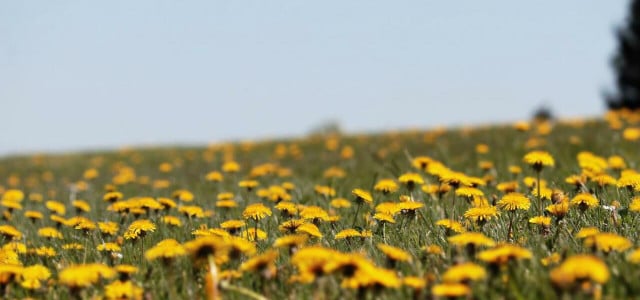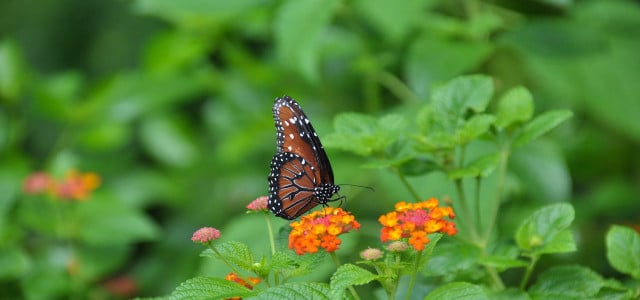Wondering how to get rid of dandelions? They are often portrayed as invasive weeds, but they are actually very beneficial – get rid of them the eco-friendly way.
Dandelions are easily among the most populous and widespread plants on earth. The more digging one does, the more they discover that dandelions are deeply intertwined with human history. They were one of the first flower to bloom en masse across the globe, and as such, they’ve provided food and medicine for generations.
Their use as a folk medicine can be traced back to the 10th and 11th centuries in the ancient Chinese, African, and Arabic worlds. Although many international research groups continue to study them, some reported health conditions that dandelions can provide relief from include:
- Inflammation
- Diabetes
- Acne
- Digestive Problems
- Elevated Blood Pressure
Today, dandelions exist and can be easily found in many human-created biomes, such as gardens, lawns, parks, and orchards. As such, they remain an important pollen source for beneficial bugs and insects in your garden. Nonetheless, many homeowners and gardeners want to know how to get rid of dandelions in their yards, despite their medicinal value, importance to insects, and beautiful color.
The Case for Getting Rid of Dandelions Naturally



(Foto: CC0 / Pixabay / Sonja-Kalee)
Despite their reported advantages, not everyone is keen to keep dandelions in their yard. They prolifically spread seeds and are perennial plants, which means that they will live and grow back in your garden for a few years before eventually dying out.
As dandelions rely on the wind to carry their seeds long distances, they can quickly pop up and spread across your garden in seemingly no time at all, which leads to some gardeners considering them a nuisance and something closer to a weed than a flower.
An average of 15,000 seeds is produced per dandelion plant. Each dandelion plant can contain up to ten flowers, with each flower in turn containing anywhere between 150-200 seeds, when the flower turns into the seed puff balls shape.
Whatever side of the fence you’re on, we recommend that you never use harmful pesticides or industrial chemicals if you’re looking into how to get rid of dandelions. Even if you’re not interested in keeping them, the dandelions you see in your yard are an excellent source of energy for pollinators, as they attract many beneficial insects and bugs because of the pollen they produce.
Not only are they important to the environment, but they are also essential to maintaining a healthy garden on a micro level. By using harmful pesticides and industrial chemicals to remove dandelions, not only are you damaging the soil health and biodiversity of your garden, you could be actually removing these helpful insects too.
How to Get Rid of Dandelions Naturally



(Foto: CC0 / Pixabay / photoAC)
You can make homemade weed killer, but there are more effective and natural ways we’d recommend you use when looking how to get rid of dandelions.
Despite being effective in killing weeds, the acidity of vinegar and other organic weed killers can harm the soil and grass, and they can easily irritate skin if accidentally spilled. Furthermore, all weed killers have the potential to be hazardous to children and pets, as we all know it’s often impossible to keep a constant eye on them when they’re out playing in the garden.
The following suggestions are the simplest, most eco-friendly ways to remove dandelions from your garden:
- Mow Your Lawn Regularly: By cutting off the heads of the plant, you prevent spreading, although bear in mind the root will still remove under the soil.
- Remove Each Dandelion by Weeding: The most natural and eco-friendly way to get rid of dandelions, this will also remove the roots.
- Wait For Them to Die Off: Dandelions are pretty seasonal, they flourish in Spring but usually wilt away by the late Summer.
Weeding by hand is undoubtedly the most natural and environmentally friendly way to get rid of dandelions in your garden. It’s not the most pleasant task, but it’s sometimes necessary. To get rid of weeds and keep them away, hand weeding is an excellent method. Homemade weed killers are not always effective because weed roots can remain in the soil.
Here are some quick steps you can follow with how to get rid of dandelions by weeding them out:
- Using a shovel, trowel, rake, or gardening tool of your choice, dig down to a few inches (roughly 6) below your dandelion plant.
- Find the entire taproots of the plants and pull them up with force. The plant should come out right away.
- Cover up with the hole in your grass with soil, and smooth over.
Utopia Tip: The soil is at its most workable in Spring or after a rainstorm, making that the ideal time to pull weeds.
Making the Most of Your Discarded Dandelions
1. Mulching Them
Now that you know how to get rid of dandelions, you’re probably wondering what you should do with your plants once you’re done. One zero-waste suggestion we propose is to mulch them. Leaving mulched clippings on the lawn is good for the grass and prevents dandelion seeds from germinating on the surface.
In addition to preventing new weeds from sprouting, mulches can be used to suffocate those that have already taken root in flower beds. Furthermore, dandelions roots accumulate calcium in the soil, by mulching them rather than throwing them away, you can keep this calcium in your soil.
2. Eating Dandelions
On the other hand, dandelions are also famous for their nutritional value, and they are even grown commercially as a leaf vegetable to be used in soups and salads. Many of the health benefits we discussed earlier are because dandelions are high in Vitamins A,C, K, potassium, magnesium, calcium and iron.
In fact, they even carry more iron and calcium than spinach. Therefore, if you want to keep the dandelion greens, a good idea is to wash them, chopped them up, and throw them in a delicious salad. Otherwise, dandelion flowers can be used to make sweet vegan dandelion honey or even chopped up and used as a coffee substitute.
Delicious Dandelion Iced Tea Recipe



(Foto: CC0 / Pixabay / silviarita)
If you’re looking for another creative way to use your discarded dandelions, try this delicious homemade recipe for Dandelion Iced Tea – it’s also one of the best teas for colds. If you’d prefer hot tea, try our hot dandelion tea recipe.
Never pick them from your lawn if you use pesticides, and never from the side of the road as they can collect pollutants and other pesticides. Always make sure to wash your dandelions thoroughly, and be careful with ingesting the stems as they are waxy and can cause nausea.
Here’s how to make dandelion iced tea:
Ingredients
- Dandelions
- Mint or lemon balm leaves (optional)
- Honey, or vegan honey substitute, to taste
- Hot water
Instructions
- After washing and chopping your dandelion flowers and greens, place them in a pot with your mint or lemon balm leaves and a dollop of honey, before adding water.
- Bring to the boil. After this, turn down the heat and allow to steep for 30 minutes
- Using a colander, strain mixture into another saucepan.
- Next, pour this liquid into a jar.
- Add lid and refrigerate. Serve chilled.
Your dandelion iced tea should stay good for two to three days.
Utopia Tip: For zero-waste, keep these greens and flower leftovers from your tea for compost.
Read more:
- Edible Weeds: 9 Common Weeds You Can Eat
- Calming Tea: Varieties to Help with Stress and Anxiety
- Edible Flowers: Which Are Safe to Eat and How to Put Them to Use
Important Information regarding Health-related Topics.
** Links to retailers marked with ** or underlined orange are partially partner links: If you buy here, you actively support Utopia.org, because we will receive a small part of the sales proceeds. More info.Do you like this post?









